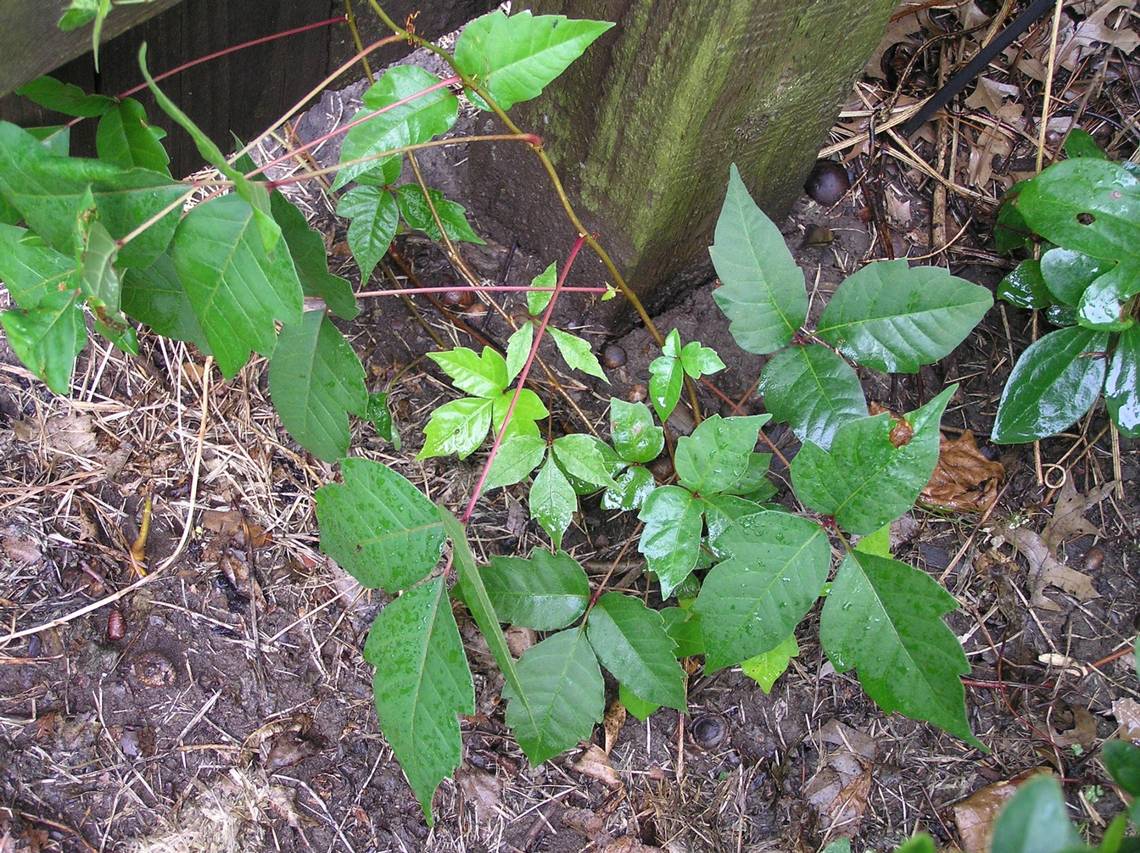
With extra moisture seen by much of the metro recently, you may be discovering more of an offensive garden foe in your landscapes while weeding. Aggressive, pernicious and toxic, poison ivy thrives in moist soil and can tolerate numerous types of both soil and lighting for germination.
As summer is also the time of year the plant flowers and berries, there’s ample opportunity for seeds to be sown as wildlife consume and drop them in their travels. So, what can be done about these germinating adversaries?
It is first important to understand that poison ivy affects everyone differently. While some may have a very minor reaction to exposure, others can have severe reactions requiring medical attention. Therefore, when it comes to controlling poison ivy, the efforts should be done by someone who has a tolerance to them, with personal protective equipment like pants, long-sleeved shirts and gloves used.
If this means outsourcing control of the plant to someone other than yourself, take this plan of action, as the control measure for the plant involve close interaction.
In full grown form, poison ivy is a vining plant that attaches to trees and shrubs via aerial roots. Every part of the plant, including leaves, stems, berries and flowers, is considered hazardous, as they all contain the oil that ultimately becomes an irritant for humans. As with many other aggressive vines, the best form of eradicating poison ivy is repeated depletion of the carbohydrate storage in its roots, as this storage is what is used by the plant to continually re-sprout even after surface growth has been removed.
This in mind, addressing surface growth is the first task in removal, and there are a few different methods. Large vines should be cut at their base and carefully disposed of. They should not be burned, as the oils can travel in the air with smoke, creating a lung irritant. The base of the severed stems should then be treated with a broadleaf herbicide to hinder regrowth from the roots. Smaller just-sprouting plants can just be hand pulled. For medium-size plants, a mower or trimmer may be carefully used to knock the plants back. Though varying, each of these approaches ultimately contributes to the depletion of a viable root system for the plant.
Think you have poison ivy on your land, but not quite sure how to identify it? The telltale signs of the plant are compound leaves of three (although there can be more), red stems, and rounded or toothed lobed margins (indented leaf edges). If allowed to persist to autumn, the plant will also expose itself via bright red or orange fall foliage color. Also of note, while typically a vine, the plant can likewise appear in the form of a dwarf shrub.
In any instance of the plant, it is best to remember, foliage is required to keep it photosynthesizing, feeding itself, and contributing to its root storage. Control this foliage and you control the plant.
Anthony Reardon is a horticulture agent with Kansas State University Research and Extension. Need help? Contact the Johnson County Extension gardening hotline at 913-715-7050 or email garden.help@jocogov.org.
EMEA Tribune is not involved in this news article, it is taken from our partners and or from the News Agencies. Copyright and Credit go to the News Agencies, email news@emeatribune.com Follow our WhatsApp verified Channel





